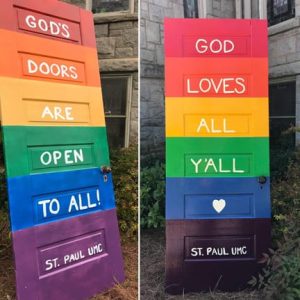By Eric Schneider
Thank you to the many people on the NextDoor website who are addressing the actual biological components involved with the trees of Grant Park – really, thank you too. In fact the park lost 49 trees last year – and at least two were struck by lightning and severely damaged. I know this because I carefully counted and logged them throughout 2017 with a dedicated GP neighbor and truly outstanding volunteer of the Grant Park Conservancy (GPC). He is not on the board, but in full disclosure I am one of the Directors on the board; also I am past Park Improvements Chair and a former Vice Chair. But really I want everyone to contemplate my diatribe here as a citizen – more than a GPC voice, because that’s not my official role.
I am a citizen; one that has donated over 350 hours of physical labor in the park, while also contributing annually cold hard cash (actually checks) to the GPC. And now I know a lot about this park and feel I can add a little perspective.
First of all, it can be surmised the reason 49 trees died last year is due to a number of circumstances. Storms, sure. And some due to old age, of course. But mostly, the trees died and are dying at a staggering rate due to none other than stress!
Stress from the last severe drought (and many others over the past century – remember GP is not irrigated), mechanical damage from City of Atlanta (CoA) mowers and weed whackers, lack of mulching for years, improper placement when originally planted, crowding with other trees, lack of structural pruning, lightning strikes years past, disease and pests, improper selection of breed, even strangulation from never removed guy wires, changes in the park’s water table, traffic and former street car vibrations, hot barbecue coals poured next to tree trunks, soil compression from people (yes us!), and the multitude of cars and heavy trucks illegally driving directly on the root crowns.
The fact is Grant Park is a natural setting but is not actually “natural” for the trees growing in it – especially when considering the trees’ biology and intricately designed DNA established over millennia in the forest or region from which they originally come.
In my honest opinion, despite decades of pure and plain neglect long before the Grant Park Conservancy (GPC) was established, Grant Park is on a very well-documented upward trajectory in relevance to its health, especially within the park’s vital woodlands. This is almost all a result of the GPC, which, by the way, receives zero dollars ($0.00) of any kind from the City of Atlanta (CoA).
Entire ridges on the east and west sides of the park have gone through multiple phases of invasive species eradication in the past few years. I have personally led hundreds of volunteers around Park Avenue and Rosalia Street and the transformation is obvious to anyone who remembers the 40-foot curtain of invasive vines, the homeless camps, and weed trees above the pool area. The GPC’s Director of Operations, board committee members, and paid consultants have led dozens more Project G.R.A.N.T. (Greenspace Restoration and Neighborhood Teamwork) volunteer workdays improving many other sections of the park.
The final phases of these woodland restorations will inevitably be replanting and proper maintenance of new trees. I imagine even more improvements and plainly obvious canopy-health transformations will occur when the newly updated Grant Park Masterplan is completed and implemented.
To be clear, all this work was and will continue to be outside the scope of the Grant Park Gateway, a/k/a the new parking deck. Rather it will be done to simply improve the health, safety, and beauty of the park… a core mission of the community.
As for the Gateway, it was raised, addressed, and completed in design mostly before my time on the board. However, after researching it carefully, especially the trees affected, I came to understand the problem is/was that basically a 40-year-old parking lot is in desperate need of investment and renovation. Keep in mind that the majority of trees coming down are surrounded by layers of asphalt, are in poor health, and were planted in less than ideal, or even inappropriate, growing conditions. Therefore, I came to fully support the project but only after the concessions required by the GPC were approved.
Yes, I know it is not perfect by any stretch. Anything is rarely perfect. But no, these trees are not “old growth.” Yes, there are some that are beautiful and healthy; most others, not so much. Not all the trees coming down are majestic, but some truly are and I will miss them terribly.
True, the park belongs to the people but the City of Atlanta runs it and people elect representatives to deal with running a metropolitan park. They in turn appoint more non-elected representatives; this is government for all it can and cannot be.
However, there is good news. The brightest silver lining is the fact that the tree recompense will occur 100% in the park itself versus scattered throughout the Neighborhood Planning Unit (NPU) which is actually the norm. Exact location for planting and the tree selection (from the Olmsted palate) will be led by the GPC and will be a true collaboration between the GPC’s staff, paid arborists, and consultants and the City of Atlanta’s Parks & Recreation department. I think the green roof is better than asphalt/concrete and the storm water management plan is a plus and an example of green infrastructure desperately needed in a sustainable Atlanta. Being constructed level with Boulevard is a no-brainer, but is only happening because of the GPC.
The fact is that maintenance will be a huge issue and will only happen properly through a public (CoA) and private (GPC) partnership. Hear me now – this will require everyone to stay involved. Park maintenance is one of the most important points I hope folks consider as the project wraps up and we get to move back in… maintenance, maintenance, maintenance.
I respect Save The Trees of Grant Park and commend them for their tenacity and accomplishments. Leigh Finlayson, one of the original litigants against the deck, and I have spoken often, and he even joined GPC for mulching events last fall when all this heartache was front and center and neighbors were seemingly pitted against one another.
And I truly have, and will continue to, lament the sounds of the chainsaws. As they change our local landscape I will coincidentally be working in the rest of the park mulching, cleaning up trash, continuing to remove invasives, all the while leading volunteers that want to save the trees of Grant Park.
Simply put, 95% of the trees in the park still are in need of some sort of care and could really use your donated time and even or especially your money. This theme will continue into perpetuity so think about it from a civic perspective. The rest of the park needs your help.
The Gateway is happening. That’s what we all collectively know. Now let’s see if we can save the rest of the park. The GPC is currently paying a professional pruner to properly prune the smaller trees already in the park for generations to come. There are and will be continuous volunteer days within Project G.R.A.N.T. available for signup on the Hands On Atlanta website or by calling the GPC offices. The Boy Scouts and the Girl Scouts are helping out, and corporations are sending staff and dollars. The GPC Board of Directors is raising money for a Masterplan to be followed by a multi-million-dollar capital campaign. Local businesses are supporting the Spring auction and Grant Park’s 135th birthday celebration. Please come out to these events, volunteer, or spend your money at the auction. And, of course, there is the 16th Annual Summer Shade festival in August, GPC’s largest fundraiser to raise money for more maintenance.
Look, I just spent hours today stacking the branches left by the GPC paid pruner so the crews from the CoA can remove and compost them shortly. You’ll see them all over the north end. With the 40 volunteers I worked with last weekend, we also stacked voluminous amounts of branches so precious GPC dollars were not spent on someone simply moving large sticks but rather saved for greater investments like Milledge Fountain and the recently purchased and installed picnic spots, new trash cans, and benches. Now when you see these stacks you will know who paid for the pruning – GPC, and who actually made the piles – 100% volunteers.
This past weekend’s group also mulched at least 30 trees and GPC as a whole has probably mulched 250 to 300 of the most vulnerable young trees, all in the past eight months, thereby keeping at bay the mowers and weedwhackers, providing insulation for the crown and root systems in all seasons, organically reducing the unwanted noxious weeds, and finally preserving the rainwater in the soil for those periods of drought that are inevitable.
I have read The Hidden Life of Trees but recently I’ve also spent a lot of time with “your/our” non-Gateway trees. They need us!
It’s the park’s 135th birthday and the GPC’s goal is to plant 135 trees that have zero/nothing/nada to do with the Grant Park Gateway. Rather, all that effort is to offset the 49 trees that died last year, and the dozens that died in 2016, and so on. So please, let us all harness the energy here on NextDoor and see through a commitment to the tree canopy everywhere, not just in Grant Park. Of course, please consider the above commentary and visit the GPC at www.gpconservancy.org.
I hear the Conservancy might have a new and improved website coming, so revisit often. Follow them on Facebook and all the other social media (sadly, they were blocked on NextDoor due to policy guidelines).
But if that is not your thing, then maybe volunteer with Trees Atlanta, Historic Oakland Cemetery, or donate to Save Ormewood Forest or Park Pride. Take the annual Treekeepers course at Trees Atlanta Treehouse this summer. It was great and I’m proud to be an alum.
All the while, please call your representatives and ask them to get the storm drains cleared and unclogged and get the granite curbing repaired to prevent erosion in Grant Park. Tell your councilmember to significantly and substantially increase the P&R budget since it is woefully underfunded. Or, if you think it’s worthy, call Parks & Recreation and ask them to consider a dedicated, year round on-site supervisor working on projects in the CoA’s fourth largest park. The GPC can help, but the park just might need a greater boots-on-the-ground CoA presence during this time of enhancement and change.
Regardless, always call 311 or the GPC if you see hazardous tree limbs, if water is leaking, or if there’s a potential safety issue. Whew! Obviously, I could go on and on about the trees. I see them nearly every day with either my daughter/family or walking Miles the dog. There are not enough trees in GP in my opinion but new ones are likely coming and older ones are finally and definitely being tended to – but not for free and rarely by the city. You can change that constructively with or without me. But you know where to find me if I can help.
And yes, I can agree with, but still challenge, Mr. Voris. (Jim Voris is one of the leaders of the Save The Trees of Grant Park and Stick to the Plan for 800 Glenwood groups.)
There is much more than a one-day allowance to mourn the trees coming down. There will be many more days to act to keep the rest of the park healthy and the rest of the trees from falling over before their time.







Comments are closed.